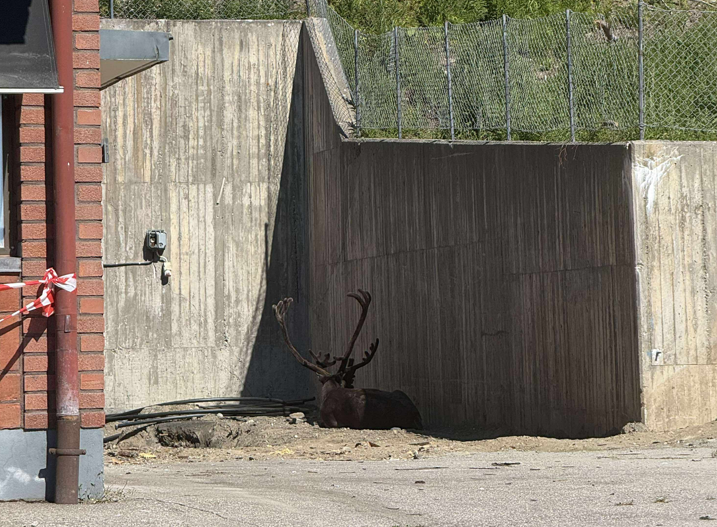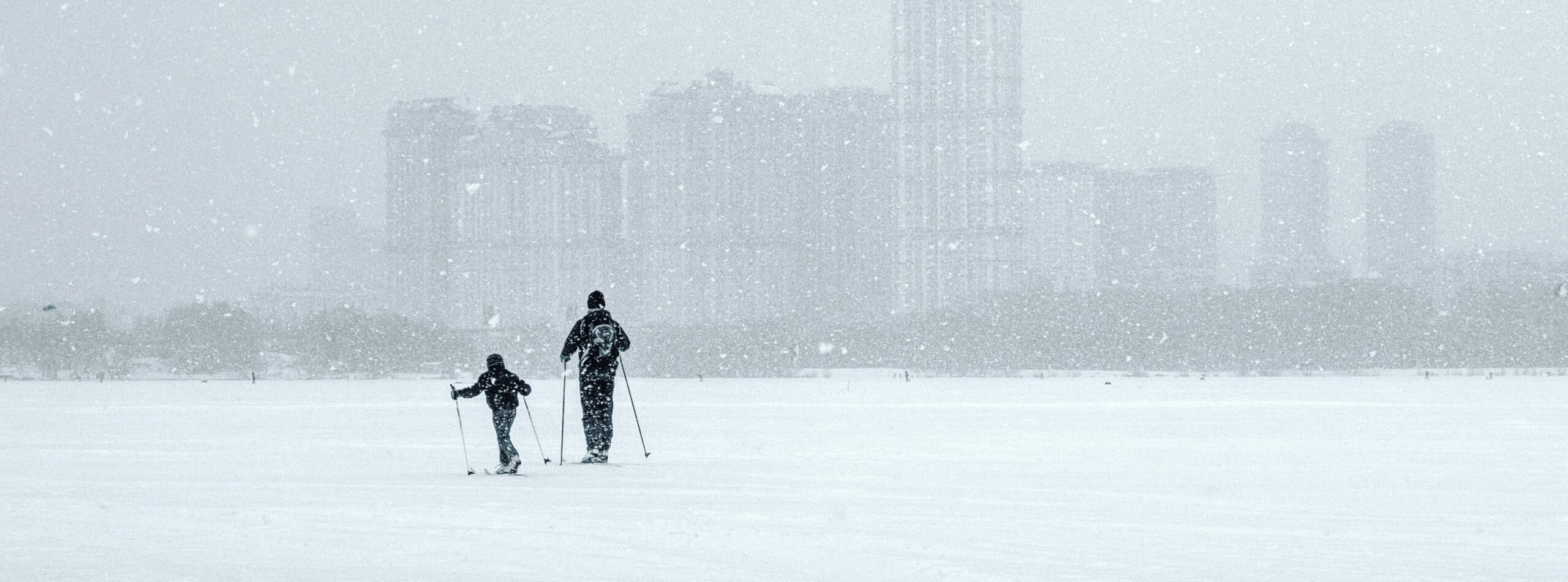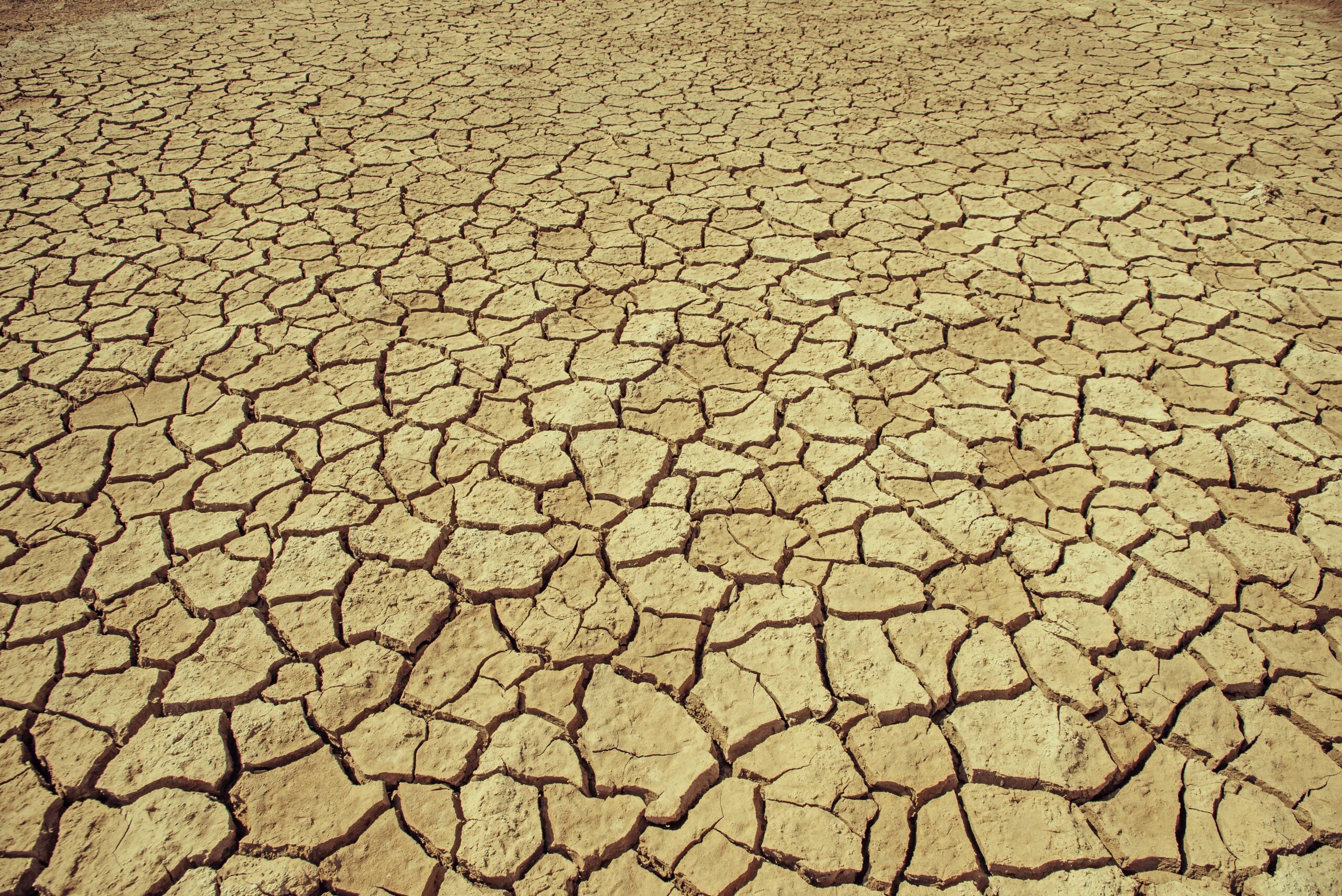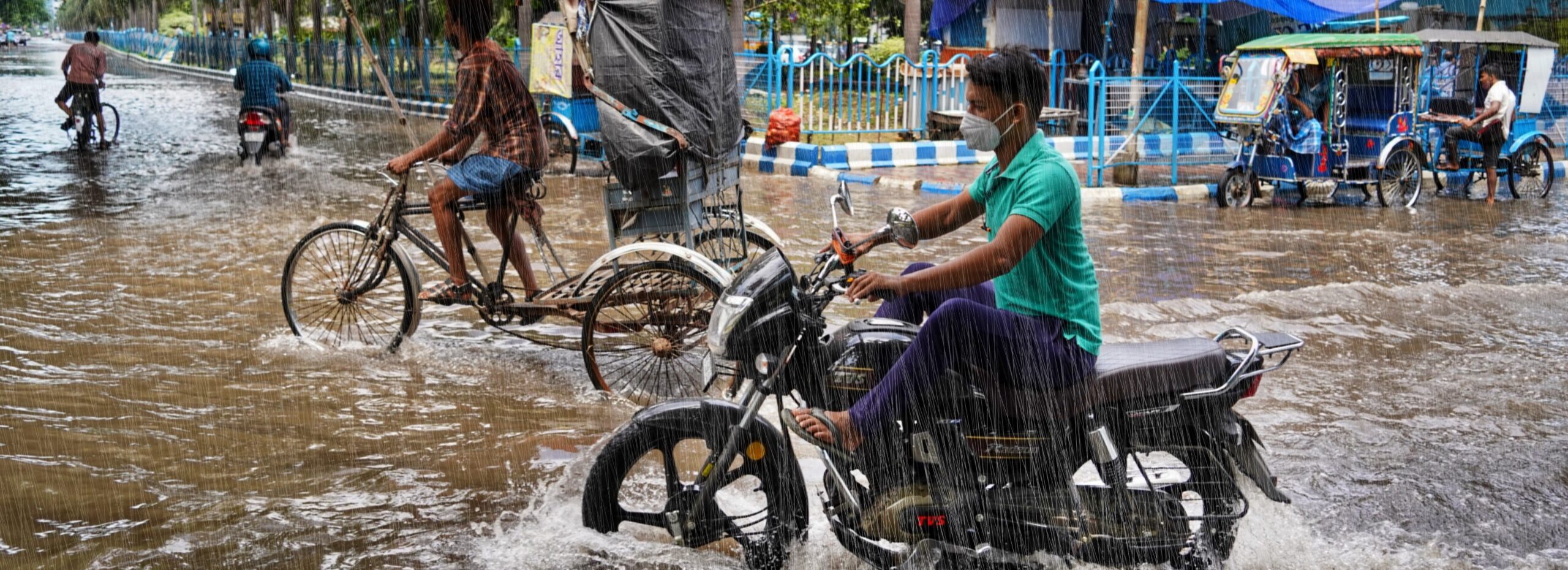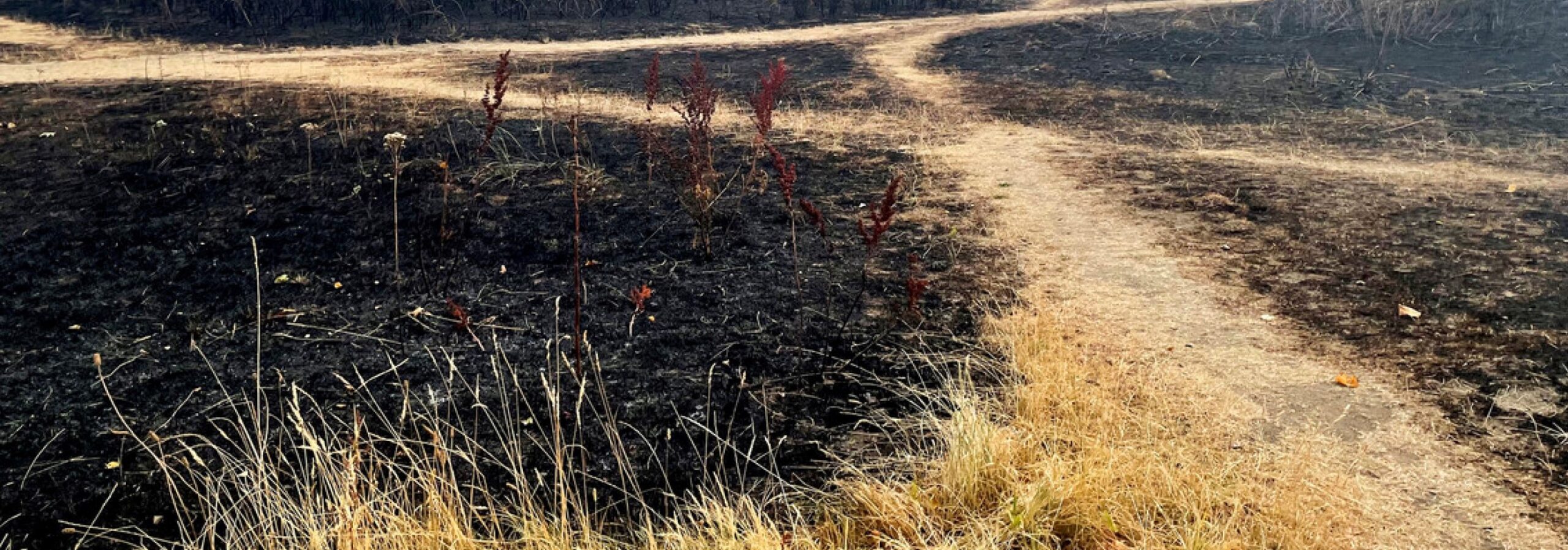In Namsskogan and Gartland, Norway, temperatures reached 30°C and more for 13 days in a row, while in Ylitornio, Finland maximum temperatures stayed above 25°C for 26 days in a row, something hitherto unknown this far north in Europe. While many heat records in the three countries were set in 2018, the last time a similarly strong heatwave affected Fennoscania, the duration of this 2025 event put enormous strain on the healthcare system, with many more hospital admissions, and hospitals struggling to cool buildings (NRK, 2025; TV2, 2025). At least 28 people in Finland (YLE News, 2025), 31 in Sweden (GP, 2025) and 8 in Norway (NTB, 2025) died in July due to drowning.
The heat also disrupted wildlife. Reindeer were spotted in towns, likely trying to escape the heat and find water and relief from biting insects, (Euronews, 2025; BBC, 2025). In Norway, drivers were warned about the danger of encountering them in tunnels as they fled the heat, and reindeer deaths were reported in Finland (Folkebladet, 2025; Itrosmo, 2025; RTE, 2025). The hot weather also dried out the soil and vegetation, creating favourable conditions for wildfires. As a result, numerous wildfires occurred across the region, including in Lapland. Algal blooms in the Baltic Sea, as well as lakes in Finland, have been unusually extensive this summer due to high temperatures (Sweden Herald, 2025; STTINFO, 2025) .
Researchers from Norway, Finland, Sweden, Denmark, the United States and the United Kingdom collaborated to assess to what extent human-induced climate change altered the likelihood and intensity of the extreme heat in the region. The analysis focuses on the 14 hottest days and nights over the three countries: Norway, Sweden and Finland. Figure 1 shows the magnitude of the event for both the hottest 14 days (tx14x; left) and nights (tn14x; right), crosses marked locations where temperature records have been broken.
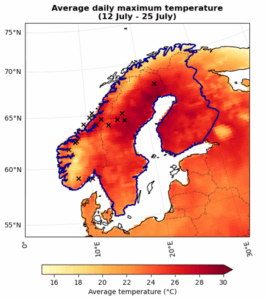
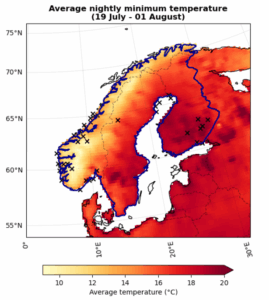
Main Findings
- The July 2025 heatwave struck during the peak Nordic holiday season, leading to reduced staffing and strained healthcare, social services, and municipal functions across Norway, Sweden, and Finland. With formal, voluntary, and informal support systems under strain, response capacity was reduced, highlighting vulnerabilities in the care infrastructure during a period of growing climate extremes.
- This heatwave was unusual not only for its intensity but also for its duration, with multiple stations setting new records for consecutive days above 30°C and high temperatures lasting for more than two weeks. In today’s climate, which has warmed globally by 1.3°C, the 14-day maximum temperatures in the study region observed in 2025 have a return time of about 50 years. The 14-day nighttime temperatures are less extreme in today’s climate, with a return time of about 20 years. In a 1.3°C colder climate, however, such temperatures, day and night, would have been extremely rare.
- When combining the observation-based analysis with climate models to quantify the role of climate change in the 14-day heat event, we conclude that climate change made the extreme heat about 2°C hotter. The range of uncertainty for the change in likelihood of similar events is very wide because in many of the datasets (both in observations and climate models) the event would have been statistically impossible in a 1.3°C cooler climate, making it impossible to quantify. Based on the available evidence we conclude that similar events are at least ten times more likely to occur now than they would have been in a preindustrial climate without human-caused warming; however, this is likely an underestimate.
- In 2018, the region was hit by a similarly persistent heatwave. Due to warming increasing from 1.1 to 1.3°C, similar heatwaves are now estimated to be twice as likely as they were in 2018, when the region last experienced a prolonged heatwave. This finding highlights how even seemingly small increases in warming expose people to more frequent periods of dangerous heat.
- After a further 1.3°C of global warming – the level projected to be reached by the end of the century under current policies – the likelihood and intensity of such events are projected to continue to increase, becoming a further 1.4°C warmer and a further five times as likely.
- Nighttime temperatures have been made about 2°C hotter than they would have been without human-caused climate change, and around 33 times more likely. After a further 1.3°C of warming, nighttime temperatures are projected to warm by a further 1.7°C, with temperatures like those recorded in 2025 a further 7 times more likely to occur.
- Access to active cooling in Nordic homes is still limited but growing, mainly through heat pumps, which provide both heating and cooling. While these are now the main form of mechanical cooling, the 2018 heatwave showed that many buildings, including care facilities, and preschools, overheat in summer due to winter-focused design, often lacking both cooling systems and adequate shading. As heatwaves become more frequent, cold-focused building practices will need to be adjusted or supplemented with active cooling to avoid risks associated with indoor heat.
- Traditional Nordic summer activities such as staying in uninsulated cabins, camping, and alcohol consumption can increase heat-related risks due to limited cooling, physical strain, and dehydration, especially in remote areas. An increase in drowning deaths during the heat episode highlights additional risks that arise as people try to find ways to cool off.
- Climate extremes threaten Sámi livelihoods, with heat, drought, and forage shortages disrupting reindeer grazing and food access. Sámi leaders view these impacts as human rights issues and call for adaptation efforts that respect Indigenous rights and traditional knowledge.
- In addition to reindeer, high temperatures have additional impacts on the natural environment, including increasing tree cover loss, and incidences of harmful algal blooms which can impact aquatic ecosystems, recreation, and drinking water.
- Effective governance plays a crucial role in heat resilience, and while Nordic countries have strengthened risk assessments and institutional responsibilities since the 2018 heatwave, there are opportunities to strengthen coordination amongst municipal and private actors, and implement structural changes in care settings.

